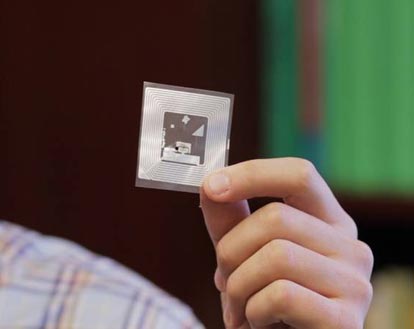MIT chemists have developed a sensor that can wirelessly and cheaply detect hazardous gasses and environmental pollutants. The sensors can detect food spoilage in warehouses and gasses such as ammonia, hydrogen peroxide, cyclohexanone, and more.
The sensors are favorable because they are cheap to produce, and are easy to use – since is no wiring or power is involved.
“The new sensors are made from modified near-field communication (NFC) tags. These tags, which receive the little power they need from the device reading them, function as wirelessly addressable barcodes and are mainly used for tracking products such as cars or pharmaceuticals as they move through a supply chain, such as in a manufacturing plant or warehouse,” according to researchers.
In addition, smartphones can read the NFC tags and can send out short pulses of magnetic fields. MIT researchers added carbon nanotubes to these tags, which lead to the development of CARDS – chemically actuated resonant devices. “When carbon nanotubes bind to the target gas, their ability to conduct electricity changes, which shifts the radio frequencies at which power can be transferred to the device. When a smartphone pings the CARD, the CARD responds only if it can receive sufficient power at the smartphone-transmitted radio frequencies, allowing the phone to determine whether the circuit has been altered and the gas is present,” according to researchers.
Researchers have filed for a patent for their sensor technology and they’re looking into possible applications for these sensors.
“Because these devices are so inexpensive and can be read by smartphones, they could be deployed nearly anywhere: indoors to detect explosives and other harmful gases, or outdoors to monitor environmental pollutants,” researchers noted.





